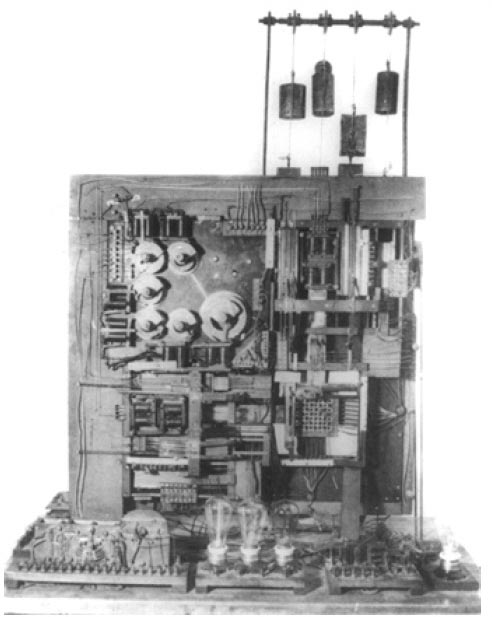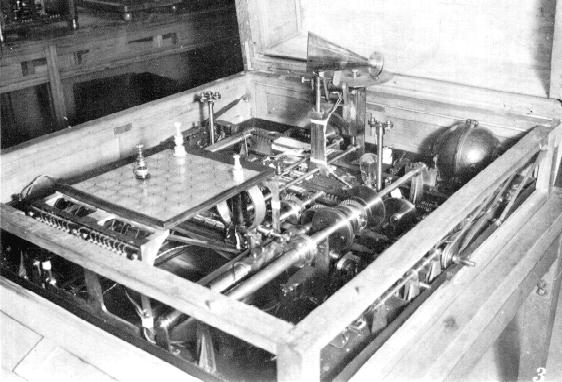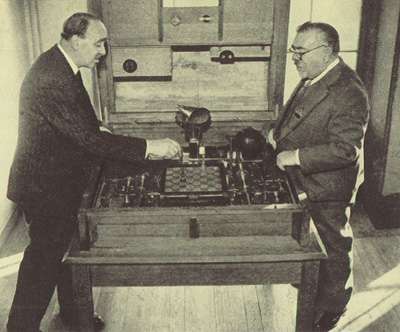24. Torres Quevedo
24. Torres Quevedo
Notes:
In 1911, the Spanish inventor, Leonardo Torres Quevedo (1852 - 1936), designed and demonstrated the world's first chess automaton which he called El Ajedrecista – Spanish for ‘The Chess Player’. It was not designed to play an entire game of chess. Rather, it was created to automatically play a King and Rook endgame against a human player who had just a King. Irrespective of the starting position, it could mate its opponent every time, though not always in the minimum possible number of moves. El Ajedrecista – version of 1911/1912
“ ... fully automatic, with electrical sensing of the pieces on the board and what was in effect a mechanical arm to move its own pieces. Some years later Torres made a second chess automaton, which used magnets underneath the board to move the pieces.” Wikipedia (Jan 2008) claims the later model (with magnets rather than the mechanical arm) was developed by Leonardo's son, Gonzalo (rather than by Leonardo). In any event, here is a picture of the later 1920 machine:
 El Ajedrecista – version of 1920
The final photograph below shows the inventor's son, Gonzalo Torres Quevedo (on the left) demonstrating El Ajedrecista to Prof Norbert Wiener (of Wiener Process fame, for those readers familiar with the splendours of Brownian motion and stochastic calculus) at the 1951 Paris Cybernetic Congress. Prof Wiener is wearing the uber cool 1950s vintage glasses:

References
|